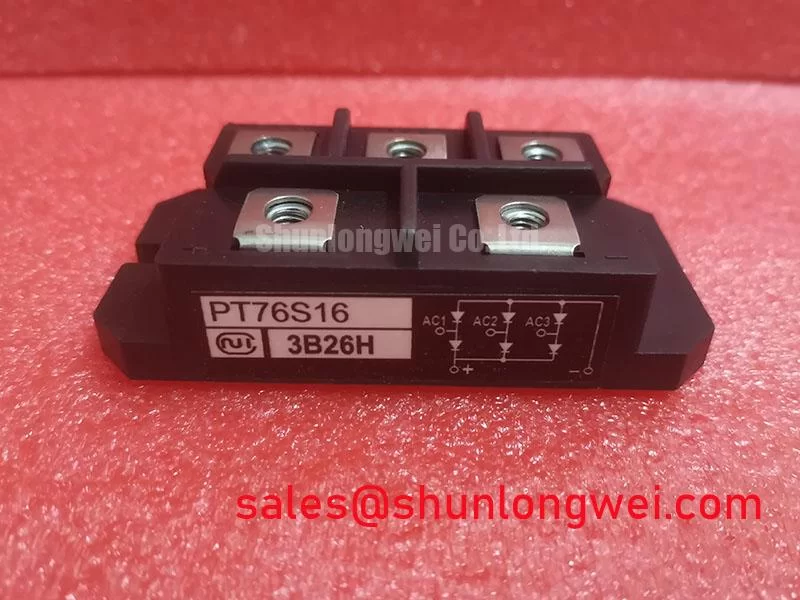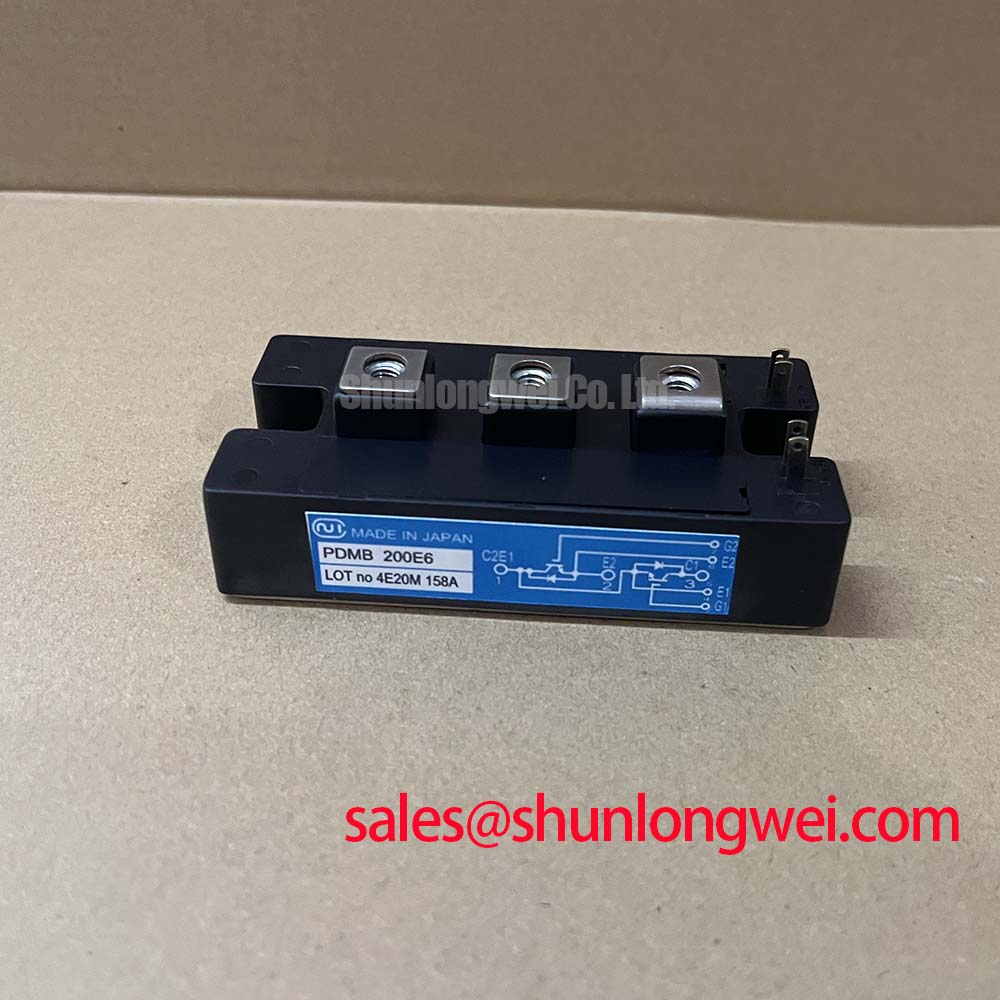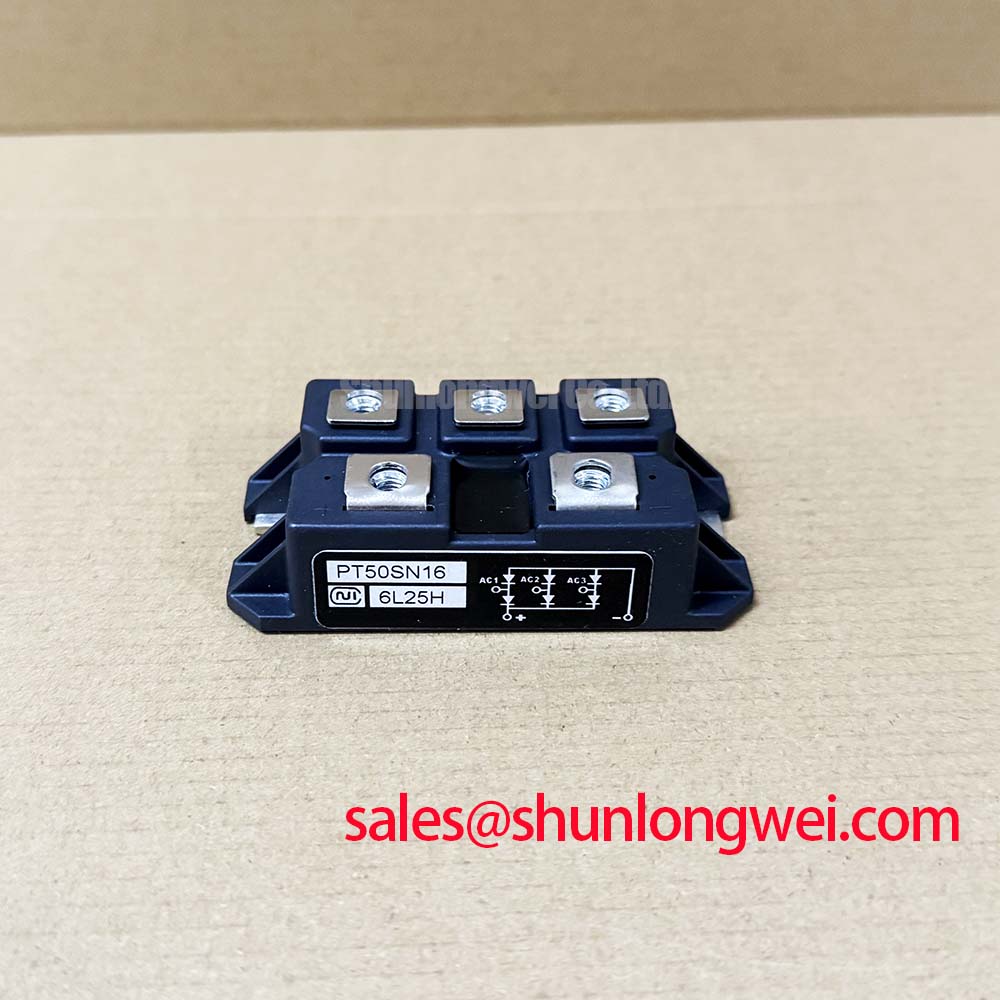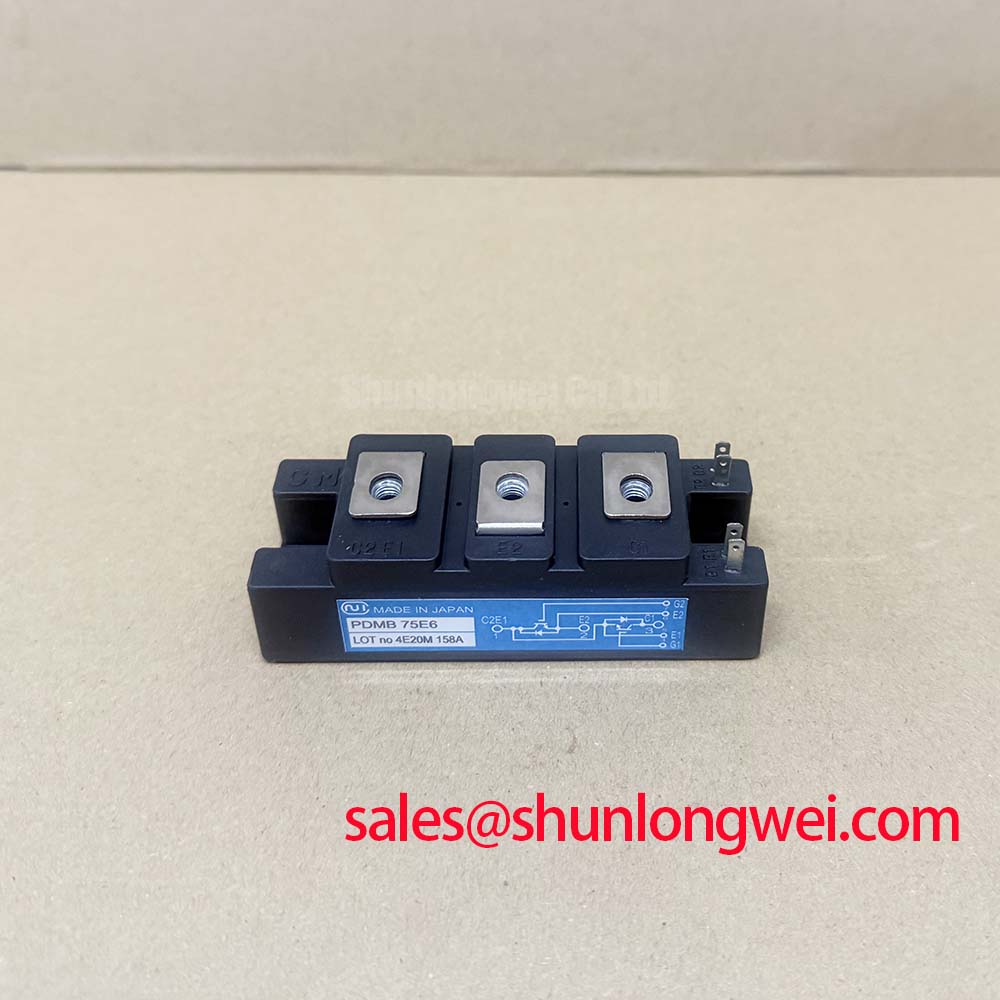NIEC PT76S16 | Integrated 1200V, 75A PIM for Compact Motor Drives
The NIEC PT76S16 is a highly integrated Power Integrated Module (PIM) engineered to streamline the design and manufacturing of three-phase power conversion systems. By combining a three-phase converter bridge, a three-phase inverter bridge, and a brake chopper circuit into a single, compact package, this IGBT module provides a robust foundation for variable frequency drives, uninterruptible power supplies, and other demanding industrial applications. The PT76S16 is designed for engineers seeking to reduce system complexity, improve reliability, and accelerate time-to-market.
- All-in-One Integration: Features a 7-in-1 configuration (3-phase rectifier + 3-phase inverter + brake IGBT) that minimizes external component count and simplifies PCB layout.
- Optimized for Motor Control: The 1200V, 75A rating is ideally suited for controlling AC induction motors in the 30 kW to 37 kW (40-50 HP) class on 380-480V AC lines.
- Enhanced Reliability: A single, isolated module reduces potential points of failure compared to discrete solutions and simplifies thermal management through a common baseplate.
- Simplified Assembly: Drastically reduces manufacturing complexity and cost by consolidating the entire power stage into one component.
Key Electrical Characteristics
The following parameters define the core operational capabilities of the NIEC PT76S16 module. For a comprehensive overview of all specifications, including detailed thermal and switching characteristics, download the official datasheet.
| Parameter | Value |
|---|---|
| Collector-Emitter Voltage (VCES) | 1200 V |
| Continuous Collector Current, Inverter (IC) | 75 A (at TC = 80°C) |
| Forward Current, Converter (IF) | 75 A (at TC = 80°C) |
| Collector-Emitter Saturation Voltage (VCE(sat)) | 2.7 V (typ) / 3.3 V (max) at IC = 75 A |
| Total Power Dissipation (PC) | 360 W |
| Isolation Voltage (Viso) | 2500 V (AC, 1 minute) |
Engineered for Demanding Industrial Applications
The integrated architecture of the NIEC PT76S16 delivers tangible benefits across a range of high-power applications. Its design directly addresses common engineering challenges in system layout, thermal design, and reliability.
- Variable Frequency Drives (VFDs): This module is the quintessential power core for compact VFDs. The all-in-one design provides the AC-DC conversion, DC-AC inversion, and dynamic braking capability necessary for precise motor speed and torque control in equipment such as conveyors, pumps, fans, and machine tools.
- Uninterruptible Power Supplies (UPS): In double-conversion UPS systems, the PT76S16 can serve as the primary power conversion block. Its robust construction ensures reliable operation during critical power backup scenarios, safeguarding sensitive electronic equipment.
- Industrial Servo Drives: While modern servo systems often demand faster switching speeds, the PT76S16 remains an excellent choice for legacy systems or cost-sensitive servo applications requiring high reliability and straightforward control. For a deeper look into the specific demands of these systems, explore our guide on the role of IGBTs in robotic servo drives.
Technical Deep Dive: Design Philosophy and Performance
The PT76S16 is a testament to a design philosophy centered on integration and robustness. Understanding its core technology helps engineers leverage its full potential.
The PIM Advantage: By integrating the entire power stage into a single Power Integrated Module (PIM), the PT76S16 significantly reduces stray inductance between stages, a common source of voltage overshoot and EMI in discrete designs. This simplification allows for a more compact final product, a single heatsink for thermal management, and a streamlined assembly process, directly lowering manufacturing costs.
Silicon Technology Trade-offs: The VCE(sat) of 2.7V is characteristic of proven, mature IGBT silicon technology. This design prioritizes ruggedness and a wide Safe Operating Area (SOA) over the ultra-low conduction losses found in the latest-generation chips. This makes the NIEC PT76S16 particularly well-suited for applications operating at lower switching frequencies (typically 2-8 kHz), where its conduction losses are manageable and its robust nature ensures long-term reliability.
Strategic Value in Mature and Cost-Sensitive Designs
In a market increasingly focused on wide-bandgap semiconductors, modules like the PT76S16 hold a critical strategic position. They provide a cost-effective, reliable, and readily available solution for the vast installed base of industrial equipment requiring maintenance and repair. For new product designs where development cost and time-to-market are the primary drivers, a proven PIM like the PT76S16 eliminates the design risks associated with newer, more complex technologies. It represents a practical balance of performance, cost, and reliability, forming the backbone of countless high-efficiency power systems already operating in the field.
Frequently Asked Questions
What are the key considerations for the gate drive design for the PT76S16?A successful gate drive design should provide a stable dual-polarity supply, typically +15V for turn-on and a negative voltage between -5V and -10V for secure turn-off. The negative bias is essential to prevent parasitic turn-on caused by Miller currents in the half-bridge inverter stages. Ensure the gate driver is placed as close to the module terminals as possible to minimize gate loop inductance.
Is the PT76S16 suitable for high-frequency switching applications (>10 kHz)?This module is not recommended for continuous operation at high switching frequencies. The turn-on and turn-off energies (Eon, Eoff) associated with its silicon technology will lead to excessive switching losses and thermal stress as frequency increases. It is optimized for the 2-8 kHz range, which is standard for industrial motor drives. For a more detailed understanding of these trade-offs, refer to our guide on decoding IGBT datasheets.















